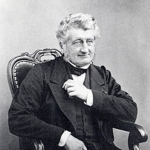Bernard Renault was a French botanist, naturalist, and paleobotanist. He is noted for his extensive research and an enormous amount of exact information that he provided on the microscopic and macroscopic anatomy of the fossil plants of Carboniferous and Permo-Carboniferous Era flora.
Background
Bernard Renault was born on March 4, 1836, in Autun, France. Renault came from a provincial middle-class family. His father, Lazare Renault, was a bailiff; his mother was Jeanne-Marie Goby. The family was of modest means and made considerable sacrifices to educate its gifted oldest son. He had to supplement the family income, and as early as 1855 he taught in a private school.
Education
Renault’s earliest scientific interest was in physics; his first doctoral dissertation (1867) was in physical chemistry and he published a number of short papers in that field, one of which was translated into German.
Career
In 1867 Renault was appointed a teacher of chemistry and physics at the lycee at Cluny. Through naturalist friends, Renault early became interested in Carboniferous and Permian fossil plants, which were abundant around Autun. Some of them were silicified so that even the microscopic details could be studied. By a happy coincidence Adolphe Brongniart, the founder of scientific paleobotany, was chief inspector of mines and had the official duty to inspect the lycee at Cluny. He met Renault, recognized his capacity, and encouraged him. Renault worked enthusiastically in his spare time, collected many new fossils, invented new and improved old methods for preparing the very tough material, and eagerly reported new discoveries to Brongniart. His first paleobotanical paper was published in 1869.
During the Franco-Prussian War, Renault was given a high administrative position on the Committee of National Defense. In 1872 Brongniart summoned him to Paris, first as a preparator and from 1876 as an assistant naturalist at the Museum d’Histoire Naturelle, a position he held until his death.
Renault obtained his second doctorate in 1879 with the dissertation “Structure comparee de quelques tiges de la flore carbonifere.” A large work on silicified seeds was started with Brongniart and published under his name in 1881, even though most of the work was done by Renault. His lectures in paleobotany resulted in the four-volume Corns de botanique fossile (1881-1885), which he printed at his own expense.
Renault was certainly a worthy successor to his teacher Brongniart. He did not quite make the great discovery that many of the fernlike plants of the Carboniferous flora were really seed ferns, but the studies of that group are largely based on Renault's keen observations. He also worked with fossil microorganisms and thereby made a great contribution to the understanding of the formation of coal.
Renault was not recognized by his French colleagues, and official and academic honors came late or not at all. He had to do most of the preparation of his difficult material by himself; and the enormous amount of material he prepared, drew, and described is a monument not only to his scientific capacity but also to his diligence and perseverance.
Membership
Renault was a member of the Société éduenne des lettres, sciences et arts (from 1867), the Société linnéenne de Normandie, the Institut géologique de Vienne. In 1886, he was a founding member and first president of the Société d'histoire naturelle et des amis du muséum d'Autun.













